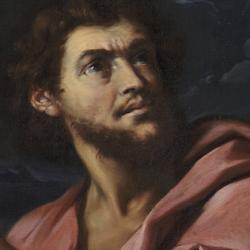INTRODUCTION
The main conflict of the early church was not with Greek philosophy or Roman power, but with those Jews who refused to acknowledge Jesus as Messiah and the Judaizers within the church who wanted to bring Gentiles under the Law. John’s first letter, like most books in the NT, reflects this conflict.
THE TEXT
“That which was from the beginning, which we have heard, which we have seen with our eyes, which we have looked upon, and our hands have handled, concerning the Word of life . . . .” (1 John 1:1-10).
AUTHOR
The author of 1 John nowhere identifies himself. From early in the church’s history, however, the letter has been viewed as a letter from John the son of Zebedee, the brother of James, the author of the fourth gospel. Apart from the testimony of the early church, the main evidence for this comes from the similarity of the letter and the gospel, which are considerable. Both the gospel and the first epistle begin with the phrase “in the beginning” (John 1:1; 1 John 1:1), and in both works the author explains the gospel in the same terms: The “only-begotten” (John 1:14, 18; 3:16; 1 John 4:9) Word that was in the beginning came in flesh (John 1:14; 1 John 4:2), and “laid down his life” for us (John 10:11-18; 1 John 3:16) so that we might “have life” (John 3:15; 1 John 5:11). I will assume that John ben Zebedee is the author of both the gospel and the epistle.
SETTING
John says that he writes in “the last hour” (2:18), at a time when “the world is passing away” (2:17). That the world is coming to an end is evident from the appearance of “antichrists” (2:18), who have already appeared in the world (4:3). Many Christians believe that John is talking about the end of the physical universe, but if he is, he is simply wrong. Two thousand years on, the physical universe has not passed away and John’s lifetime was not the “last hour” of history.
John is talking about the end of the old order, which Jesus predicted at length (Matthew 24) and which John saw in the visions of Revelation. John means that the old covenant order – with its temple, priesthood, sacrifices, and rules of cleanliness – is coming to an end soon. It is the “last hour” of the old covenant. But he means more than that. From the time of the Babylonian exile, Yahweh placed Israel in the midst of a series of Gentile empires (Babylon, Persia, Greece, Rome). With the destruction of the temple, the Lord brought an end to a world-system that had existed since the time of Nebuchadnezzar. After AD 70, Rome continued its empire for several centuries in the West and for over a millennium in the East, but its role as the Gentile “guardian” of Israel ended in the first century.
JUDAIZERS
Most commentators on 1 John believe he was opposing an early form of Gnosticism. I disagree. At the beginning of the gospel, John refers to the creation account (John 1:1; Genesis 1:1), where darkness is not evil but simply prior to the light. The Old Testament period was the evening of darkness that preceded the Sunrise of the coming of Jesus (cf. Luke 1:78); the old covenant was, Hebrews says, the time of “shadows.” When John says that men love darkness, he is saying that they love the evening of the Old Covenant rather than the Daylight of the New Covenant. Even many converted Jews want to remain in the darkness of the Old system, hoping that the Old Testament with its sacrifices and its temple and its priesthood covers their evil deeds. To “walk in darkness” (1 John 1:6) means, in the first instance, remaining within Judaism. John’s conflicts are with Judaizers. And from the first century to the twenty-first, the church’s main battles have always been with false teachers and heresies within her own walls.















